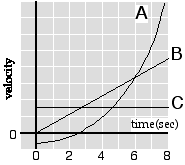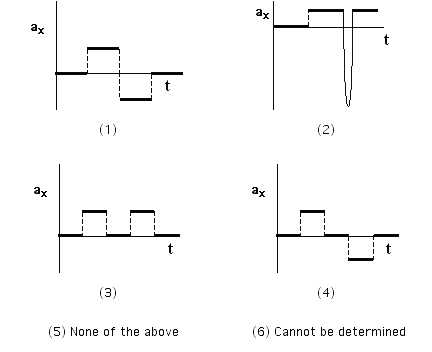A skateboarder heads straight up a steep bank angled at 45°, the whole time experiencing a constant acceleration. She manages to move 1.6m up the incline before rolling back down. The entire maneuver takes her 1.8 s, half of which is going up, the other half going down. What magnitude acceleration did she experience while on the incline?
Consider the steps in the following procedure. If the procedure is incorrect, respond with the number of the first incorrect step; if not, respond with step 7.
- The velocity vs. time graph for the situation is as shown.
- It takes the skateboarder 0.9 s to reach the highest point.
- The shaded area of the graph equals her displacement along the incline which is 1.6m.
- Equate this area (1/2 (0.9)v) to 1.6 and solve for v.
- Use v to find the slope of the velocity vs. time graph.
- The slope is equal to the acceleration.
- The procedure is correct.








Commentary:
Answer
(3) Both will have the same speed. All the forces acting on the mass
(normal, friction, gravity) are proportional to the mass so the mass
cannot affect the acceleration experienced by the mass.